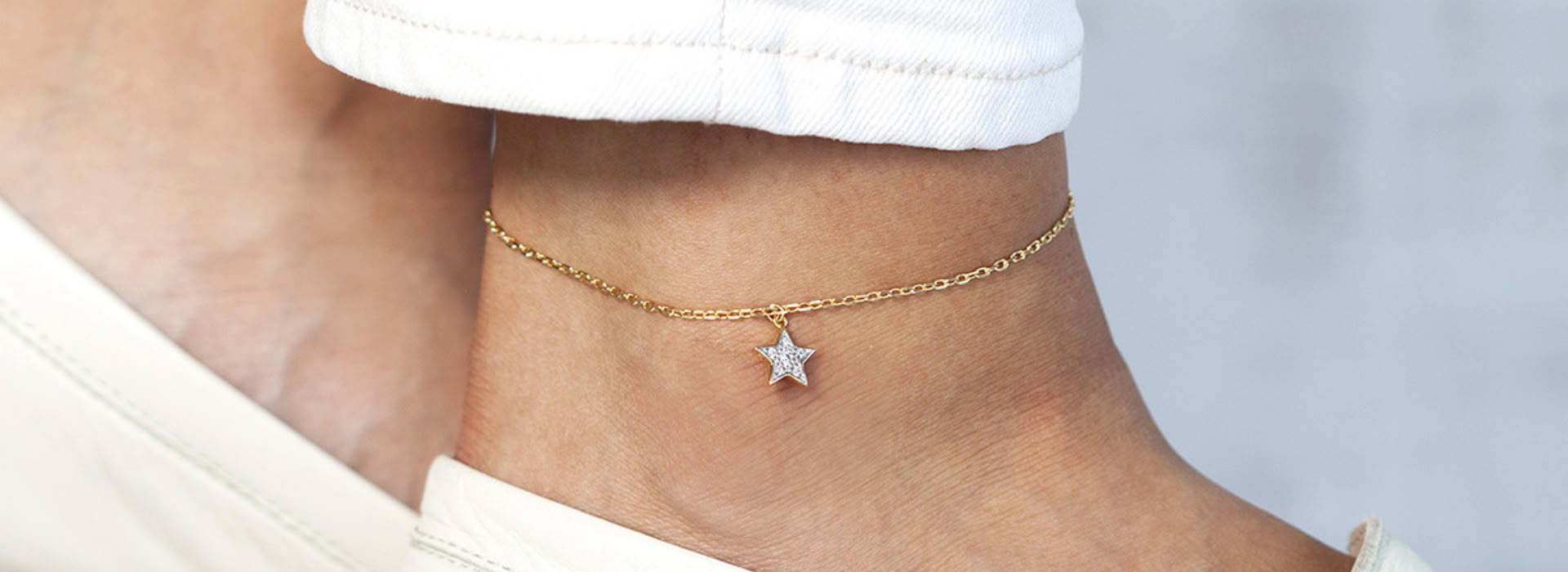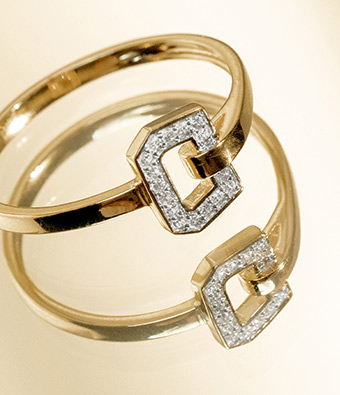The anklet is a must-have in the jewelry world, worn mainly when the warm weather arrives, and now available in a wide range of models. Today, we're going to tell you all about this symbolic piece of jewelry, and how to make the most of it!
Cultural significance of the anklet
Historical and traditional origins
The origins of the anklet can be traced back to Sumerian civilization and ancient Egypt. These bracelets were mainly worn by women: the wealthiest among them wore bracelets in noble materials such as gold, set with precious stones, while women of more modest means wore them in metal, leather or other less expensive materials. These bracelets served to indicate or promote social or marital status, or were associated with spiritual, protective or religious beliefs and convictions.
Its symbolism in different cultures
In India, for example, anklets are part of traditional culture. They are worn from an early age by the country's women and often have a highly symbolic value, associating femininity, marriage and protection.
In Africa, anklets are associated with both aesthetic and ritual purposes. They represent the wearer's ethnicity, marital status or age.
In Europe, this bracelet was worn later than on other continents, mainly in the 20th century. It became a seaside or bohemian fashion accessory. It became popular in hippie cultures, where it was seen as a sign of freedom and travel... And it also accompanied oriental dances to give rhythm to the body's movements with subtle sounds.
Anklets as fashion accessories
Evolving styles and trends
The anklet has long been a bearer of tradition and cultural symbolism, and has undergone a transformation over the centuries, in step with social evolution. From ritual object to fashion accessory, this jewel has never ceased to reinvent itself!
In ancient civilizations, anklets were mainly wide, rigid, chased and made of solid silver. In some civilizations, they were also attached right down to the toes, as in India (like a slave chain). In Africa, it was filled with noisy charms or tassels for ceremonies or rituals with local dances.
In the 60s and 70s, the anklet came into fashion with the hippie movement. This sign of freedom, reconnection with nature or simply rejection of conventions deemed too rigid, was all the rage! Made from cords, leather, shells or pearls, they become more discreet with a more casual style.
In the 90s, this jewel became a fashion accessory with a summer trend! It takes on the appearance of a very fine gold or silver chain, adorned with a tassel or a pendant with a symbol, and is associated with beachwear. Its connotation becomes more sensual, and it's a detail that discreetly highlights the ankle.
Its importance in contemporary fashion
Today, anklets and anklet chains come in a variety of designs. From minimalist to bohemian and always summery in inspiration, you'll find them everywhere from jewelers and jewellers, but not only: small independents and designers also offer their own models. The most striking trend of our time? Personalization: engraving, initials, birthstones, religious or spiritual symbols... All anklets say something about the wearer.
Spiritual and energetic interpretations
Links with femininity and assertiveness
Even though it has become a fashion accessory in its own right in our time, the anklet continues to carry spiritual and symbolic interpretations even today. For many, it is a meaningful piece of jewelry that is chosen not only for its aesthetic appeal, but also for what it evokes internally. Some see it as a symbol of energetic anchorage, a link between the earth and the human being, representing stability or the path of life.
In certain spiritual practices such as meditation or chakra energy, anklets are associated with bodily awakening and femininity. At a time when getting back to oneself and well-being is a priority, the anklet chain is a jewel of choice!
Influence on health and well-being
Today, the anklet is associated with subtle health and well-being benefits in holistic approaches. Although it has no proven medical virtues, it is widely used in certain practices as an energetic support. In some forms of traditional Chinese medicine, the ankle is a zone traversed by energy channels called meridians. Wearing jewelry in this precise location is said to promote the circulation of vital flows. Fine or precious stones can also be included to take advantage of their virtues in lithotherapy.
Choosing the right anklet
Materials and styles for every occasion
Each season has its preferred materials for wearing anklets, making them a year-round accessory of choice! In summer, the bracelet is the most visible: it's often chosen with light materials, in cotton, colored nylon, pearls or shells, as well as gold or silver chains. In spring, bracelets are carefully selected and generally feature more precious materials such as fine stones. In Autumn and Winter, with the ankle less exposed, this jewel is often transformed into an intimate accessory, worn under clothes, thinner and easier to wear.
Tips for daily care and wear
Do you want to enjoy your anklet for as long as possible? There are a few simple precautions and maintenance steps you can take to preserve its quality. First of all, you need to choose the right material for your lifestyle! Frequent wearers will prefer stainless steel, gold-plated materials, or resistant fabric cords, as their resistance to humidity (showering, sport and perspiration, etc.) is an ally when wearing jewelry on a daily basis. However, as with all jewelry, anklets should not be worn in the sea or swimming pool.
To clean your anklet, a soft, slightly damp cloth will suffice. Silver models can be polished with a special product, just like gold.
And last but not least, don't wear your anklet too tightly to prevent it from breaking with the movement of your ankles when walking.














